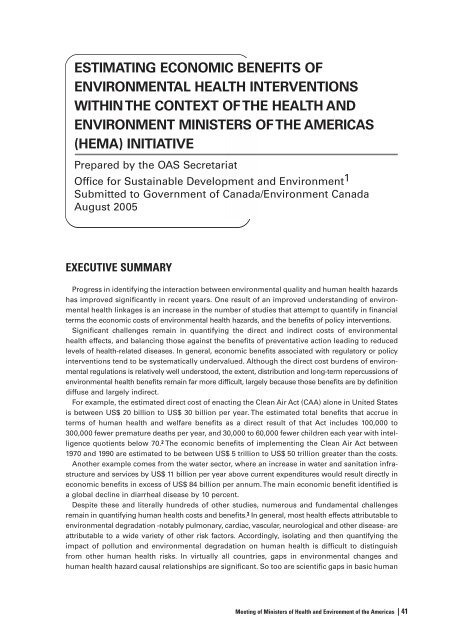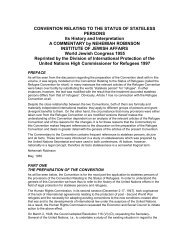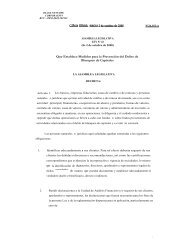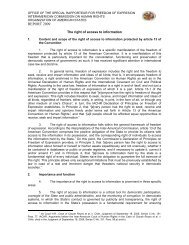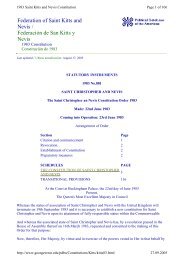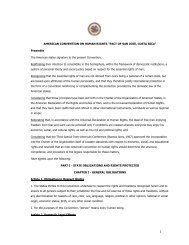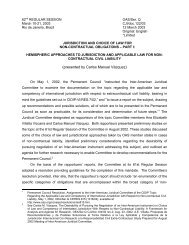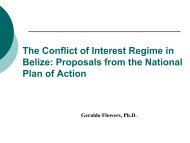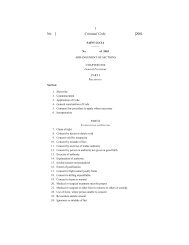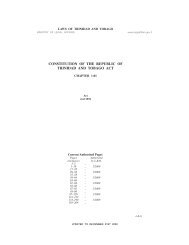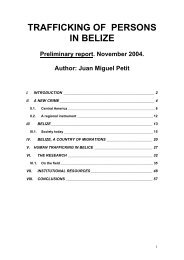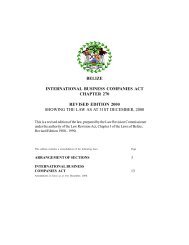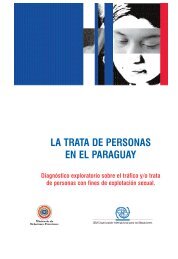(HEMA) Initiative. - OAS
(HEMA) Initiative. - OAS
(HEMA) Initiative. - OAS
Create successful ePaper yourself
Turn your PDF publications into a flip-book with our unique Google optimized e-Paper software.
ESTIMATING ECONOMIC BENEFITS OF<br />
ENVIRONMENTAL HEALTH INTERVENTIONS<br />
WITHIN THE CONTEXT OF THE HEALTH AND<br />
ENVIRONMENT MINISTERS OF THE AMERICAS<br />
(<strong>HEMA</strong>) INITIATIVE<br />
Prepared by the <strong>OAS</strong> Secretariat<br />
Office for Sustainable Development and Environment 1<br />
Submitted to Government of Canada/Environment Canada<br />
August 2005<br />
EXECUTIVE SUMMARY<br />
Progress in identifying the interaction between environmental quality and human health hazards<br />
has improved significantly in recent years. One result of an improved understanding of environmental<br />
health linkages is an increase in the number of studies that attempt to quantify in financial<br />
terms the economic costs of environmental health hazards, and the benefits of policy interventions.<br />
Significant challenges remain in quantifying the direct and indirect costs of environmental<br />
health effects, and balancing those against the benefits of preventative action leading to reduced<br />
levels of health-related diseases. In general, economic benefits associated with regulatory or policy<br />
interventions tend to be systematically undervalued. Although the direct cost burdens of environmental<br />
regulations is relatively well understood, the extent, distribution and long-term repercussions of<br />
environmental health benefits remain far more difficult, largely because those benefits are by definition<br />
diffuse and largely indirect.<br />
For example, the estimated direct cost of enacting the Clean Air Act (CAA) alone in United States<br />
is between US$ 20 billion to US$ 30 billion per year. The estimated total benefits that accrue in<br />
terms of human health and welfare benefits as a direct result of that Act includes 100,000 to<br />
300,000 fewer premature deaths per year, and 30,000 to 60,000 fewer children each year with intelligence<br />
quotients below 70. 2 The economic benefits of implementing the Clean Air Act between<br />
1970 and 1990 are estimated to be between US$ 5 trillion to US$ 50 trillion greater than the costs.<br />
Another example comes from the water sector, where an increase in water and sanitation infrastructure<br />
and services by US$ 11 billion per year above current expenditures would result directly in<br />
economic benefits in excess of US$ 84 billion per annum. The main economic benefit identified is<br />
a global decline in diarrheal disease by 10 percent.<br />
Despite these and literally hundreds of other studies, numerous and fundamental challenges<br />
remain in quantifying human health costs and benefits. 3 In general, most health effects attributable to<br />
environmental degradation -notably pulmonary, cardiac, vascular, neurological and other disease- are<br />
attributable to a wide variety of other risk factors. Accordingly, isolating and then quantifying the<br />
impact of pollution and environmental degradation on human health is difficult to distinguish<br />
from other human health risks. In virtually all countries, gaps in environmental changes and<br />
human health hazard causal relationships are significant. So too are scientific gaps in basic human<br />
Meeting of Ministers of Health and Environment of the Americas |41


